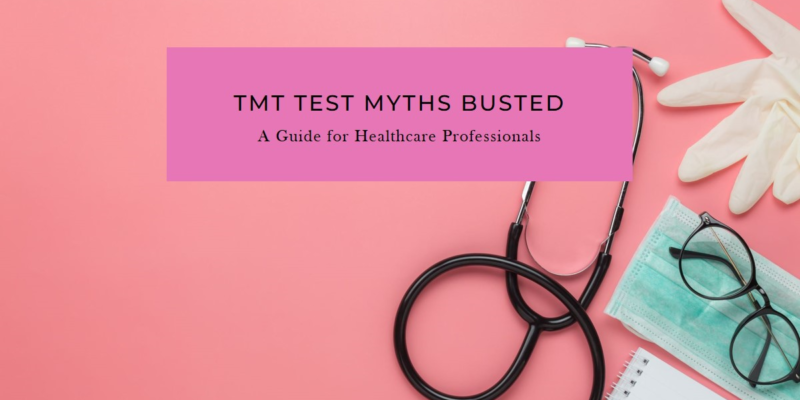
The treadmill test (TMT), also known as an exercise stress test, is a valuable tool for assessing cardiovascular health. By monitoring a patient’s heart rate, blood pressure, and electrical activity during exercise, healthcare professionals can gain insights into potential underlying issues. However, patients often have misconceptions about TMTs, which can lead to anxiety or reluctance to undergo the test. If you’re looking for a tmt test in Bangalore, here are some resources to help you find a clinic. Here, we explore some common myths and provide clear explanations to help healthcare professionals effectively address patient concerns.
Myth #1: A TMT is a strenuous exercise test only for athletes.
Reality: The TMT is tailored to individual fitness levels. The starting pace is slow and gradually increases, allowing even those with limited mobility to participate. The goal is to push the heart to a specific target rate, not to achieve peak athletic performance.
Myth #2: A positive TMT result means I definitely have heart disease.
Reality: Not necessarily. A positive result, which might involve abnormal ECG readings or symptoms like chest pain during exertion, can indicate reduced blood flow to the heart or potential problems with heart rhythm. However, it doesn’t guarantee the presence of heart disease. Further investigations might be needed for a definitive diagnosis.
According to the American Heart Association [1], approximately 50% of positive stress tests turn out to be negative for coronary artery disease (CAD) upon further evaluation. This highlights the importance of interpreting the TMT results alongside other clinical factors and medical history.
Myth #3: The TMT is painful and carries a high risk of complications.
Reality: The TMT is generally safe and well-tolerated. While some patients may experience mild fatigue or shortness of breath, serious complications are extremely rare. Throughout the test, healthcare professionals closely monitor vital signs and can adjust the intensity or stop the test immediately if any concerns arise.
Myth #4: A negative TMT result guarantees a healthy heart.
Reality: While a negative TMT is reassuring, it doesn’t completely rule out the possibility of heart disease. Some blockages in coronary arteries might not be detected during exercise. Additionally, other heart conditions like arrhythmias or heart valve problems might not be picked up by a TMT.
Myth #5: There’s no point in getting a TMT if I don’t have any symptoms.
Reality: TMTs are often used as a screening tool, particularly for individuals with risk factors for heart disease such as high blood pressure, diabetes, or a family history of the condition. Early detection allows for timely intervention and management strategies to prevent future complications.
Empowering Patients Through Clear Communication
By addressing these common misconceptions, healthcare professionals can alleviate patient anxiety and ensure a more positive experience with TMTs. Here are some additional tips for effective communication:
- Explain the rationale for the test: Discuss the patient’s risk factors and how a TMT can provide valuable information about their heart health.
- Describe the test procedure in detail: Outline the steps involved, what to expect during the test, and what to wear.
- Address any specific concerns: Actively listen to patient questions and provide clear, concise answers in a language they understand.
FAQs
- What should I avoid before a TMT? Patients are typically advised to avoid caffeine, heavy meals, and smoking for a few hours before the test.
- Can I take my medications before the TMT? Discuss medication use with the healthcare professional beforehand. Some medications might need to be adjusted before the test.
- What happens if I feel unwell during the TMT? The test will be stopped immediately if the patient experiences any discomfort or concerning symptoms.
- How long does the TMT take? The entire process, including preparation, the test itself, and recovery, typically takes around 45-60 minutes.
- When will I get the results? The healthcare professional will typically explain the TMT results and their implications shortly after the test.
Conclusion
TMTs are a valuable tool for assessing cardiovascular health. dispelling myths and fostering clear communication are key to ensuring patients approach the test with confidence and understanding. By working together, healthcare professionals can empower patients to make informed decisions about their heart health.
So, how can you effectively address these misconceptions and ensure your patients have a positive TMT experience?











